Ondulé Textiles – new weaving book!
Ondule Textiles
Throw out everything you thought you knew about weaving! Well, maybe not everything, but definitely get ready to have your mind blown. Norma Smayda, with help from Gretchen White, just released a new book called Ondule Textiles - Weaving Contours with a Fan Reed, and it is a gorgeous and fascinating look into weave structures I had never even dreamed of.
Japanese yoroke (fan) reed; Ole Akhoej.
Because of the nature of looms, weavers are used to warp and weft threads intersecting each other at right angles. Typically, the warp is stretched between the front and back of the loom, with each warp string parallel to the next and spaced evenly across the loom by the reed. The weft is then inserted perpendicular across the warp, and pressed securely into place with the beater. This creates a textile with a gridded structure. Curved designs are based solely on the interactions and placement of the warp and weft.
Detail of green and white cotton fabric; photo: Pat Foster.
Yet with ondule textiles, the warp and weft strings are purposely curved to create interesting undulations within the actual structure of the fabric. The undulations are created by using a fan reed, which has sections of dents fanned out at various angles. By raising and lowering the height of the reed relative to the warp, the warp strings gradually alternate between tightly packed or more spaced out throughout the length of the piece. Wefts are also manipulated using beaters or reeds with curved, rather than flat, forms.
Apron; photo: MaGee Grundmann.
The book covers the history of this technique, from it’s first mention in 1827 in John Murphy’s Treatise on the Art of Weaving, to it’s brief popularity in New England Mills during the 1930s, to beautiful 19th and 20th-century Japanese kimonos and obis, to modern machine woven shoes, socks, curved sleeves, elastic fabric and more. She also highlights the work of several contemporary weavers who specialize in ondule weaving, including Margaret Arafat, Pat Foster, Amy Putansu, Karina Nielson Rios, and Anne Selim. The rest of the chapters are dedicated to analyzing ondule projects and how various patterns, fibers, and weave structures can be enhanced with the use of a fan reed. She also provides a list of helpful hints on adapting your loom and reeds, and drafts for 21 of the patterns to help readers get started on their own projects.
Three silk scarves in plain weave; photo: Anne Selim.
Ondule Textiles - Weaving Contours with a Fan Reed is thoroughly researched and it seems that she has scoured the world for each and every mention of fan reeds or ondule textiles. It’s a rather obscure topic! Despite the scarcity of resources, Smayda has produced probably the most comprehensive study of ondule textiles to date. Presented with over 180 color photographs, you’ll be delighted to discover what is possible. If you are at all interested in learning about or trying out these techniques yourself, this book is not to be missed!
Twill sampler, showing two tie-ups; Norma Smayda.
In progress on the loom, Norma Smayda.
About the author:
Master weaver, Norma Smayda, has been teaching weavers at her Saunderstown Weaving School in Rhode Island since 1974 as well as at seminars throughout the country. She is a past president of the Handweavers Guild of America, and this summer she was honored in the New England Weavers Seminar Special Exhibit: A Passion For Weaving, Three Rhode Island Weavers. Smayda is the author of numerous articles and pattern drafts as well as co-author of the book Weaving Designs Miniature Overshot Patterns.
Related items of interest: • Weaving Books
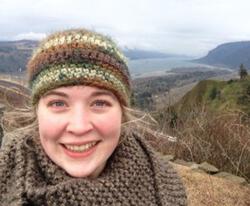

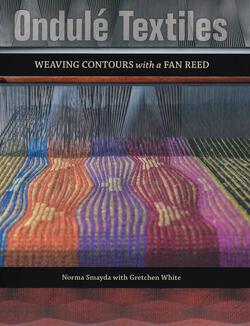
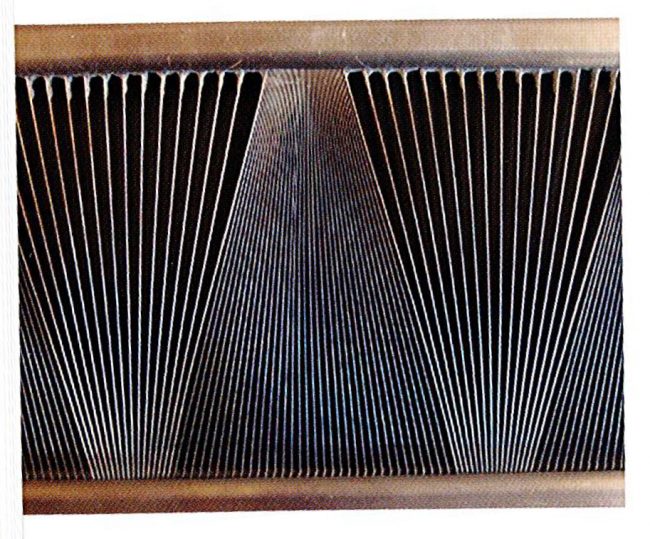
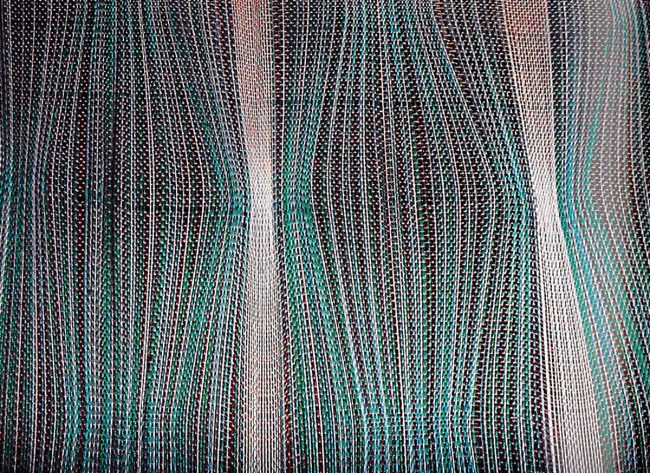

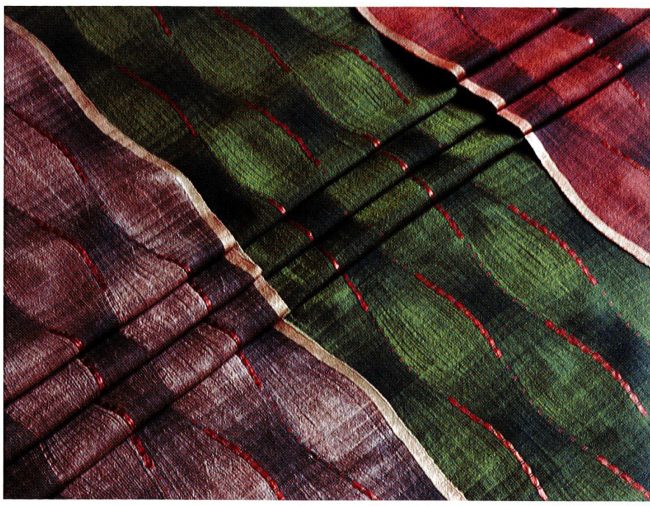
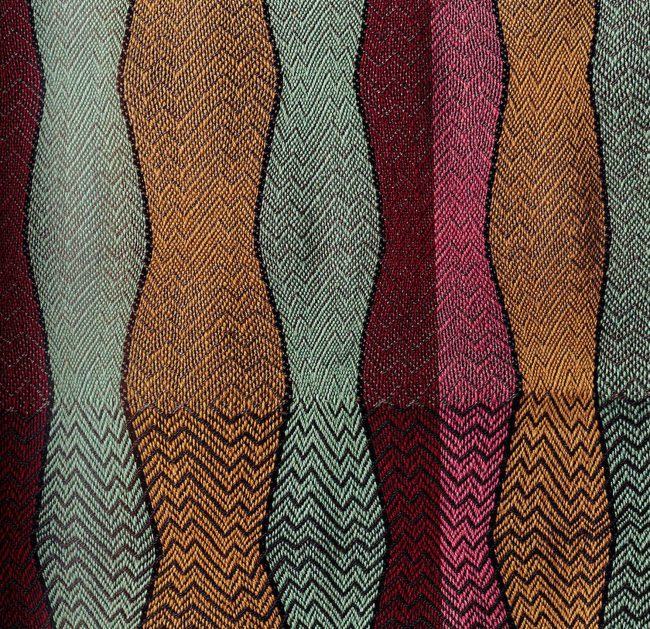
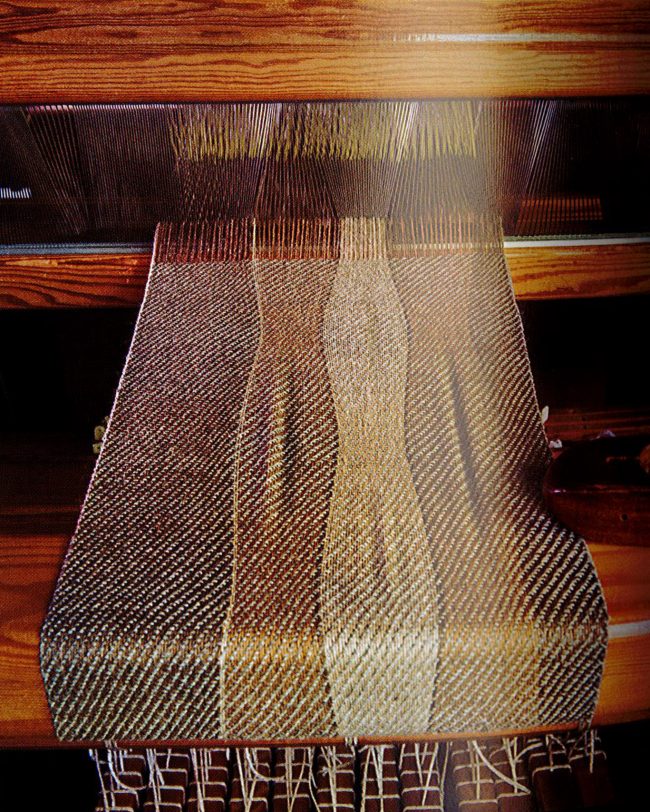
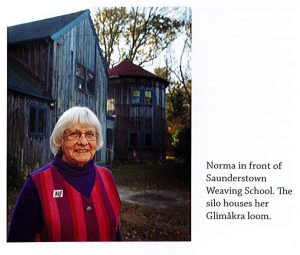
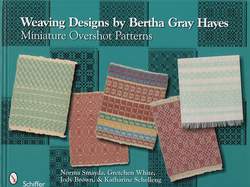
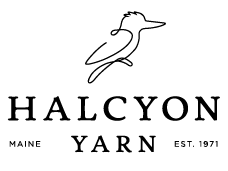
Am curious about the nodule textiles and fan reed. Is a fan reed only for rigid heddle looms?
Thanks!
Hi Lin, They’re beautiful fabrics and the Ondulé book is inspiring! The technique could be applied to either a floor loom or rigid heddle, though the examples we’ve seen are more often done on floor (multi-shaft) looms. The reeds themselves are the trickier part as they are generally custom made. There are resources and instructions in the book for getting setting up to try ondulé, and feel free to let us know if we can help. Happy weaving!